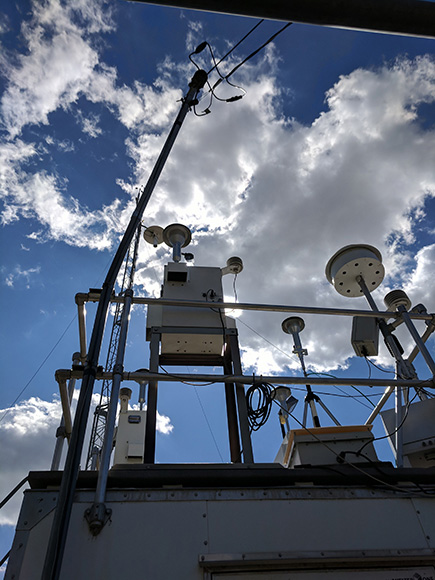Previous measurements conducted at UDAQ’s Bountiful station showed high formaldehyde and dichloromethane levels. Beginning in 2013, the Bountiful station began to experience elevated levels of formaldehyde during the winter. The mean formaldehyde concentrations at Bountiful exceed both the non-cancer risk threshold and the 1 in 1 million cancer risk threshold. Additionally, the Bountiful mean formaldehyde concentrations are more than double those at the Lindon and West Valley locations based on a study conducted in 2014. Similarly, beginning in 2008, the Bountiful site has shown sporadic but high concentrations of dichloromethane. These occur year round, and the concentrations of dichloromethane exceed the health-relevant thresholds in more than 5% of the samples collected in a year. The measurements made in Bountiful were compared to similar measurements made in Phoenix, AZ . Phoenix, AZ was chosen for a comparison city based on its similarity to Utah’s climate but absence of oil refining industries that are located in Bountiful. Comparison of these two cities showed the concentrations of hazardous air pollutants (HAPs) were similar suggesting that oil refining had little impact on the differences observed in dichloromethane concentrations. Prior to October 2008 concentrations of dichloromethane were all below 0.3 ppb. Evaluation of these data between 2005 and 2015 revealed that after 2008 more than a half of Bountiful’s dichloromethane measurements exceeded the cancer risk threshold of 0.3 ppb. On March 28, 2015, dichloromethane levels reached 291 ppbv, nearly 500 times the cancer risk threshold. However, while measurements showed high formaldehyde and dichloromethane levels, the sources of these compounds have not been revealed in special studies completed to date.

This study is a source apportionment campaign with an emphasis on determination of the source(s) of dichloromethane and formaldehyde in Bountiful City from December 2018-January 2019. Measurements of air toxics species, including formaldehyde and dichloromethane, will be collected with a GC-MS. Supporting measurements of gaseous compounds as well as PM2.5 concentration and chemical composition will also be collected as part of this effort. To determine sources of formaldehyde and dichloromethane, a positive matrix factorization analysis will also be conducted using the collected data.
- Principal Investigators: Kerry Kelly (UU), Jaron Hansen (BYU)
- Funded for: $80,067
- Study Period: 7/1/2018 – 12/31/2019
- DAQ Contact: Chris Pennell ([email protected])
